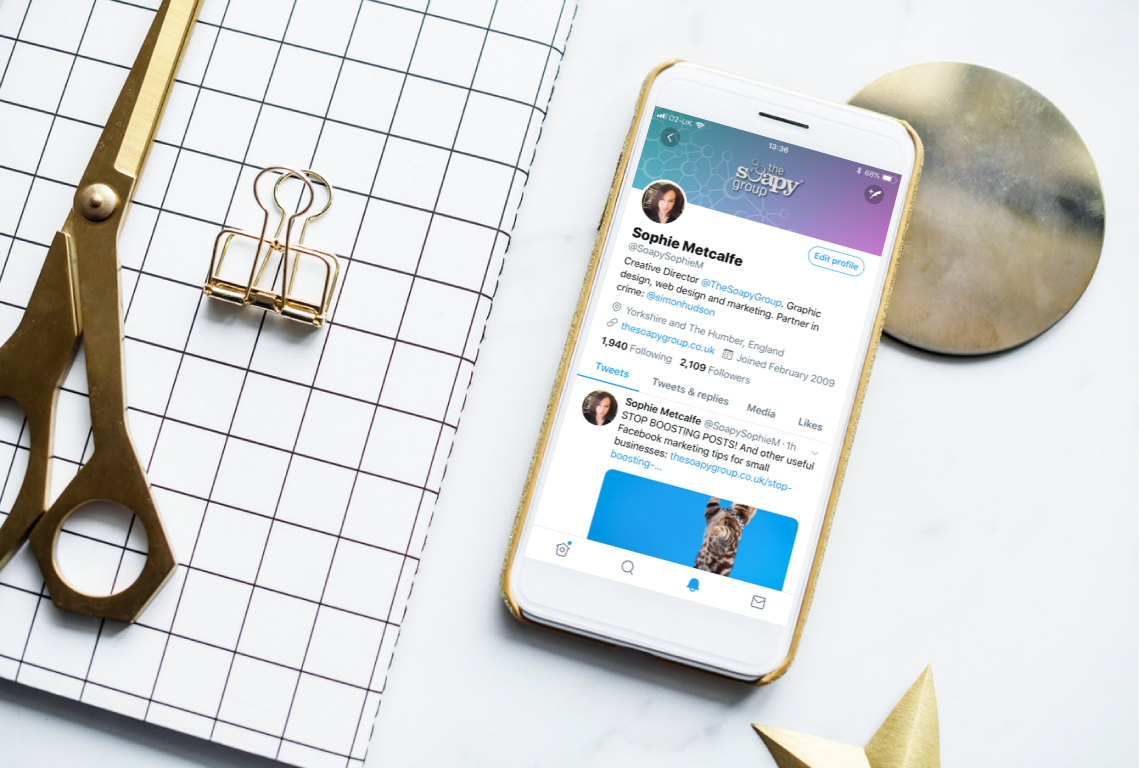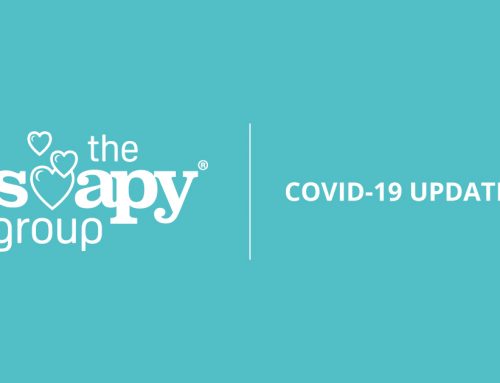Is Twitter really worth the effort? It’s a question asked by small business owners regularly. The Soapy Group Creative Director gives her advice and looks at how you can utilise Twitter for business organically.
In my experience, many business owners seem to find using Twitter for business somewhat of a conundrum. It’s there, it’s free, it has massive reach potential, yet so many small brands struggle to use it effectively for a return.
Whilst working for nearly ten years in broadcast media, I saw Twitter take hold in that time. Colleagues at the radio stations I worked at had huge success growing their own personal audiences. They were, essentially, public figures that people wanted to connect with.
Even I have over 2,000 followers. I put this down to my endeavours as a regional journalist during the past decade. I was prolific in digital networking on a local level just to have an ear to the ground. My audience growth rate has slowed since then, but it still gets utilised to help promote causes I care about and, of course, raise awareness of the Soapy Group brand.
And there’s the secret. I use my personal audience to promote my business.
The first small business I have ever tried to promote on Twitter is The Soapy Group. I openly admit, I regularly revert back to using my personal account to promote the business, because it feels much more natural to Tweet as a person than as a business.
The reason? Twitter is person-to-person networking.
In the beginning, Twitter was a fascinating platform. I remember first hearing about it during a lecture at university on ‘Web 2.0’ in which we studied a shift towards user-generated information online. It was mind-blowing that you could follow a celebrity, read what they had to say and join in with their conversation almost instantly.
Twitter really hasn’t changed all that much since then. If I open the app on my phone now, the Tweets I am immediately interested in come from real people – people with personalities who have something to say. They are able to air their thoughts in the public domain.
For bigger brands, Twitter works well as it’s very easy to build up an organic audience in the same way fans follow celebrities. There is a trend in big brands using Twitter as an updated information feed. This is perfect for utilities companies or airlines, for example, which need to keep as many people as possible informed of issues or delays.
But is it really of any use to SMEs, micro-business or sole traders?
For SMEs it is a much harder process to build up a relevant audience. It can feel like you are piling out content with little to no return.
However, consider how many of your peers are on Twitter. It is still a hugely popular platform, and many people open the app on their phones multiple times a day. There are currently 17.1-million active users on Twitter in the UK, which gives you a vast potential audience.
To reiterate my point, people want to connect with people on Twitter. It’s about personalities and conversations, retweeting interesting content and following individuals.
Ten Tips on Twitter for Business:
- Set up a ‘personal’ business account. Use a personal profile image alongside your company branding.
- Your bio should make it clear who you are within the company. Use your business title and include the company URL.
- Remember, you are representing the company. Keep that in mind, but don’t be afraid to show your personality and air views and opinions. Obviously, don’t be offensive or rude!
- I can’t emphasise this enough: Start local. Network on Twitter as you would in the ‘real’ world. Search for local business owners or local people and start following!
- Get involved in appropriate conversations – stick to business, industry and local topics. If you stay focused on building your connections, an organic following will start to grow.
- Schedule promotional tweets ahead of time. Don’t make them too salesy and try to grab attention and draw traffic to your blog posts or landing pages. Hootsuite is a fantastic tool for managing Twitter.
- Create content that is ‘re-tweetable.’ The goal is to ensure that you are always reaching beyond your followers via retweets. Get in to the habit of creating content-led tweets with eye-catching imagery, videos, articles, blogs and links – and attention-grabbing copy.
- Keep in mind that the lifespan of a Tweet is around 15 minutes. Essentially, you have 15 minutes to sell yourself, with only 140 characters to do so.
- Make it varied but relevant. If you are always simply promoting your services, you are giving your followers no reason to pay attention. Try and balance your content between sales-led content, opinions, facts, stats and information that your followers are likely to take an interest in.
- Content is King and Consistency is Queen. Never let your feed go quiet for longer than 24 hours. Keep going and don’t be afraid to regurgitate content, so long as it’s not in consecutive tweets!




